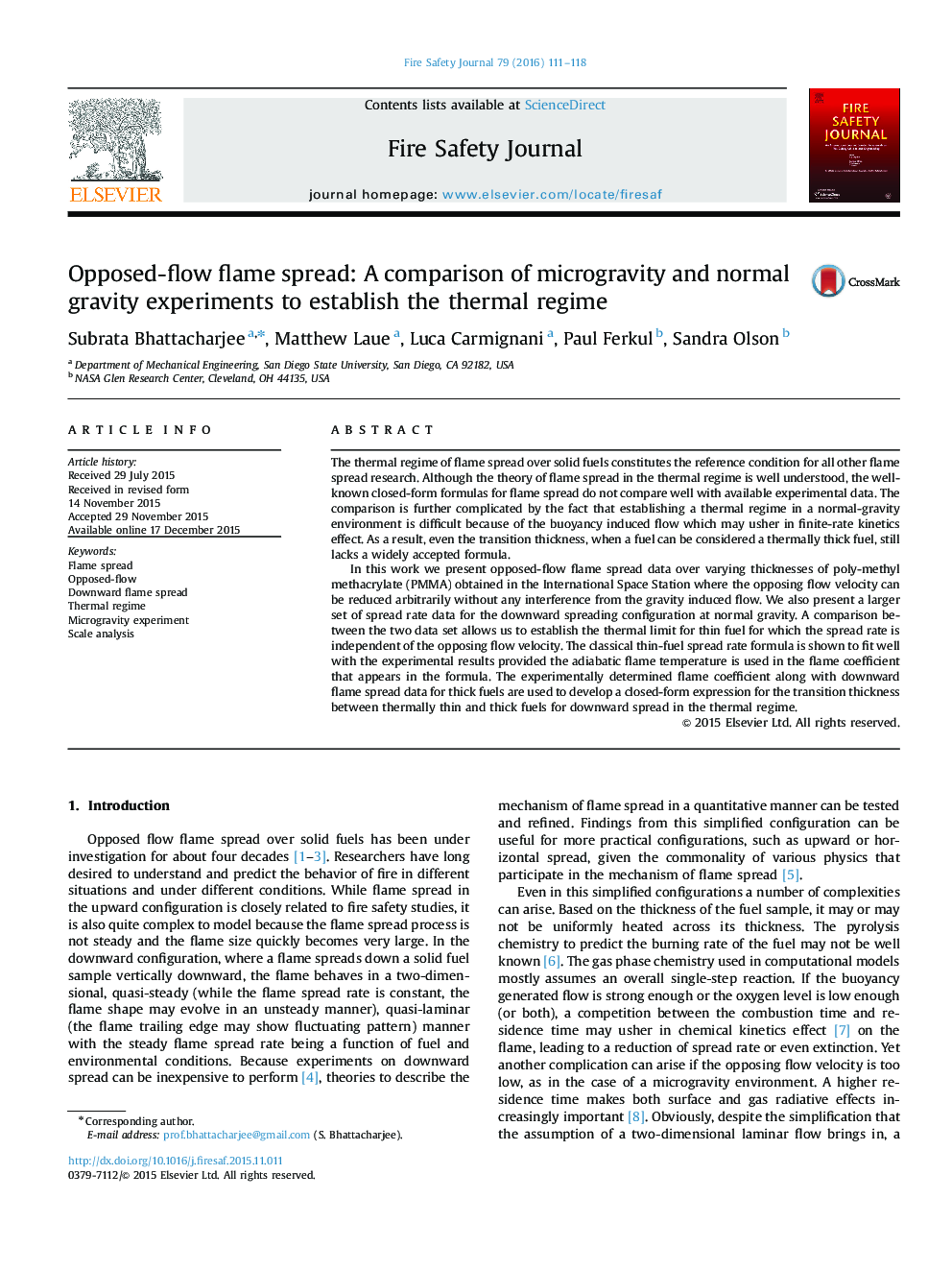| کد مقاله | کد نشریه | سال انتشار | مقاله انگلیسی | نسخه تمام متن |
|---|---|---|---|---|
| 269717 | 504696 | 2016 | 8 صفحه PDF | دانلود رایگان |
• The thermal regime of flame spread which forms the baseline of opposed-flow flame spread phenomenon is established through a scale analysis.
• Because of buoyancy induced flow, downward flame spread may or may not belong to the thermal regime.
• From recently conducted experiments in the International Space station where the opposed flow velocity is controlled without the interference from the buoyancy induced flow.
• A comparison between the two configurations indicates that downward spread over thin PMMA in a atmospheric air is thermally controlled.
• Using data for thick PMMA (from literature), a transition thickness from thermally thin to thermally thick PMMA is experimentally determined.
The thermal regime of flame spread over solid fuels constitutes the reference condition for all other flame spread research. Although the theory of flame spread in the thermal regime is well understood, the well-known closed-form formulas for flame spread do not compare well with available experimental data. The comparison is further complicated by the fact that establishing a thermal regime in a normal-gravity environment is difficult because of the buoyancy induced flow which may usher in finite-rate kinetics effect. As a result, even the transition thickness, when a fuel can be considered a thermally thick fuel, still lacks a widely accepted formula.In this work we present opposed-flow flame spread data over varying thicknesses of poly-methyl methacrylate (PMMA) obtained in the International Space Station where the opposing flow velocity can be reduced arbitrarily without any interference from the gravity induced flow. We also present a larger set of spread rate data for the downward spreading configuration at normal gravity. A comparison between the two data set allows us to establish the thermal limit for thin fuel for which the spread rate is independent of the opposing flow velocity. The classical thin-fuel spread rate formula is shown to fit well with the experimental results provided the adiabatic flame temperature is used in the flame coefficient that appears in the formula. The experimentally determined flame coefficient along with downward flame spread data for thick fuels are used to develop a closed-form expression for the transition thickness between thermally thin and thick fuels for downward spread in the thermal regime.
Journal: Fire Safety Journal - Volume 79, January 2016, Pages 111–118
